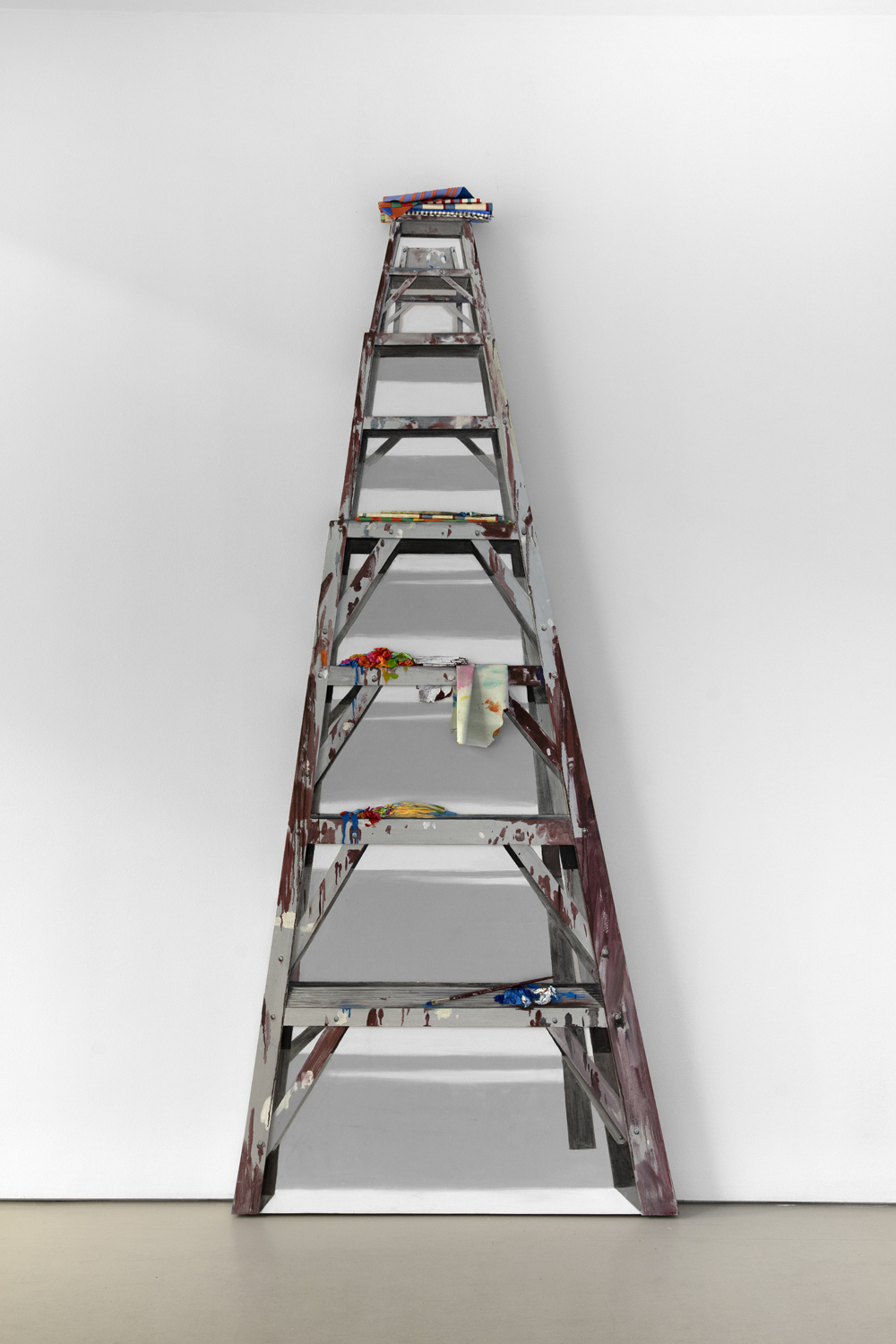
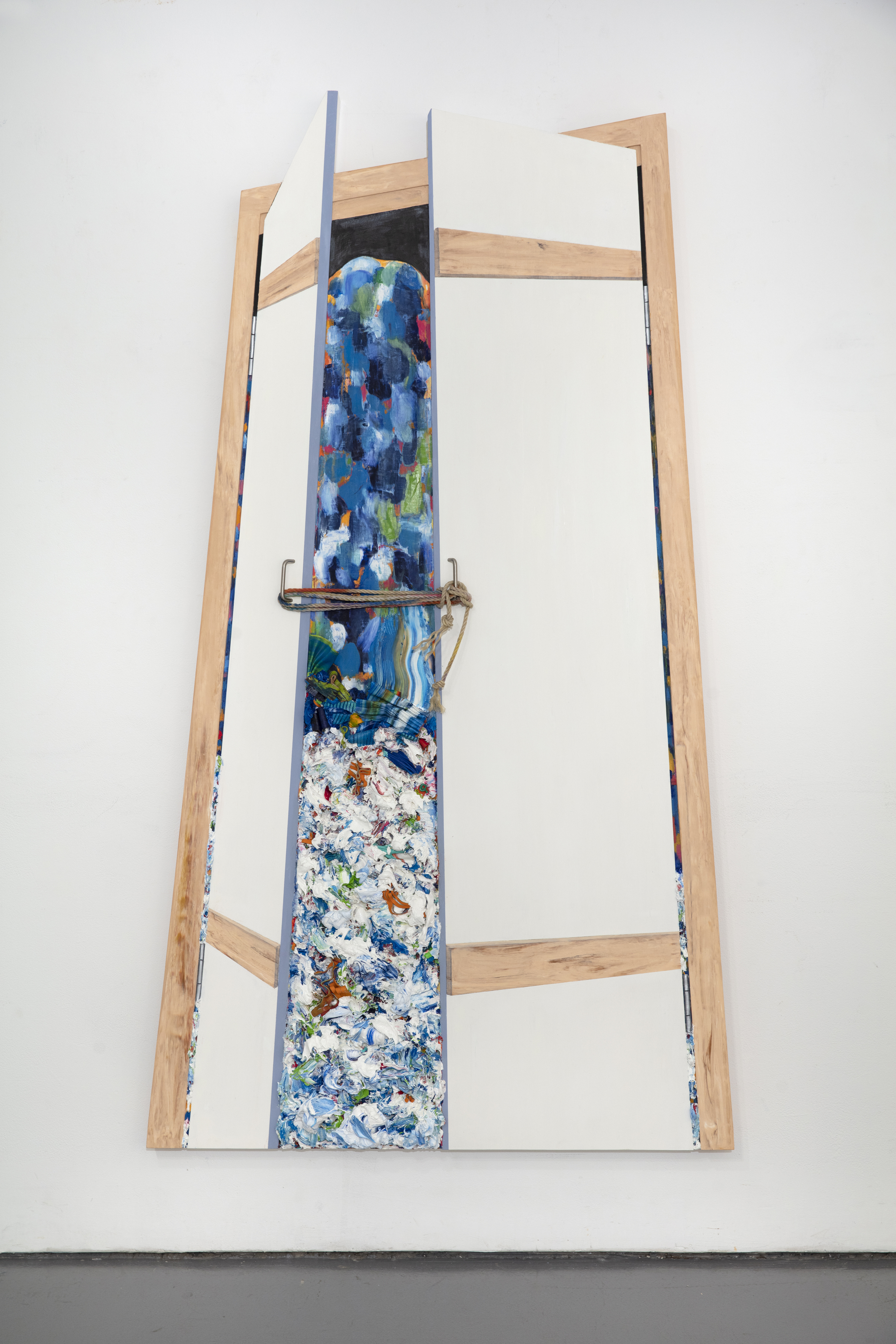
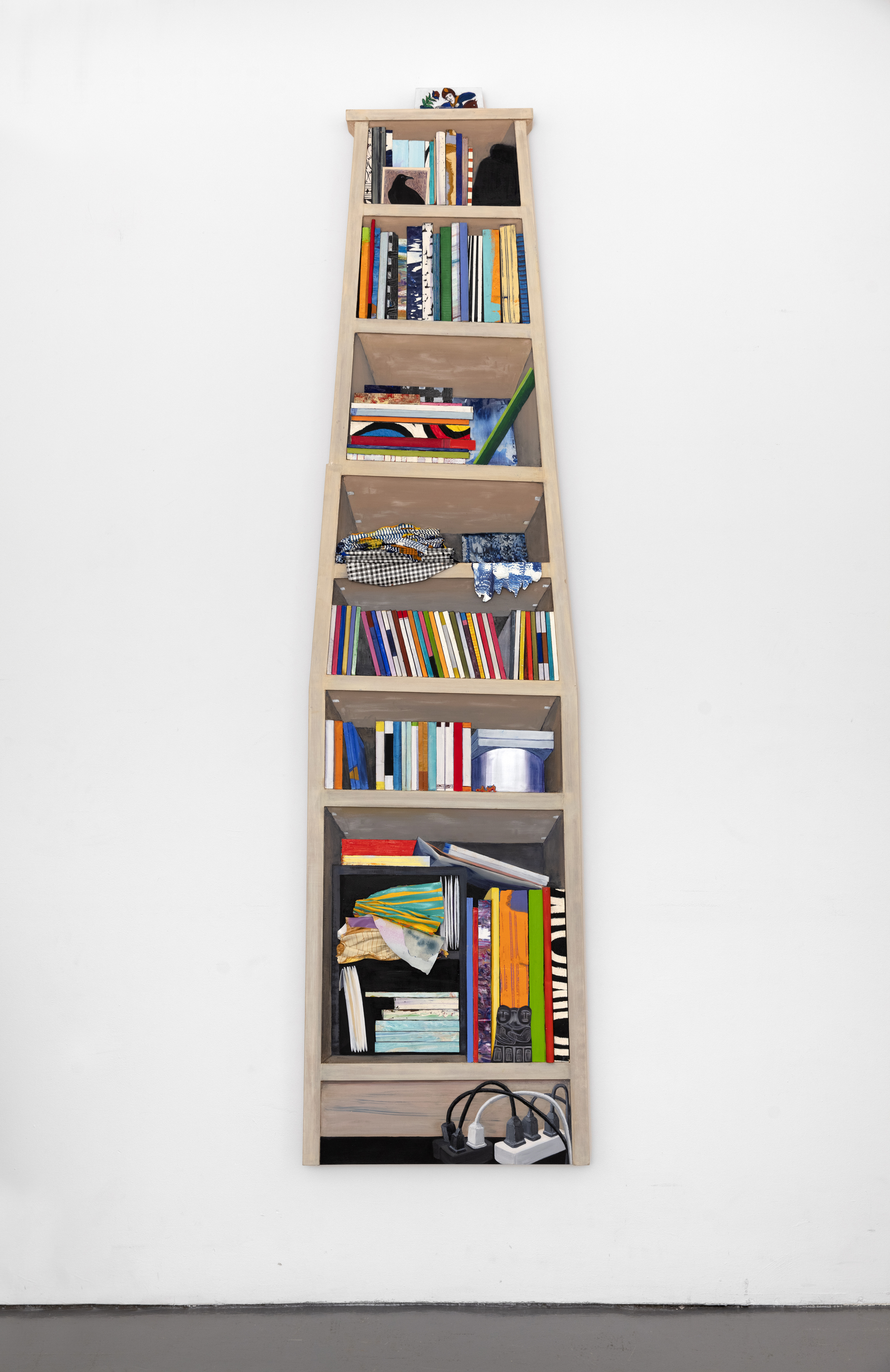
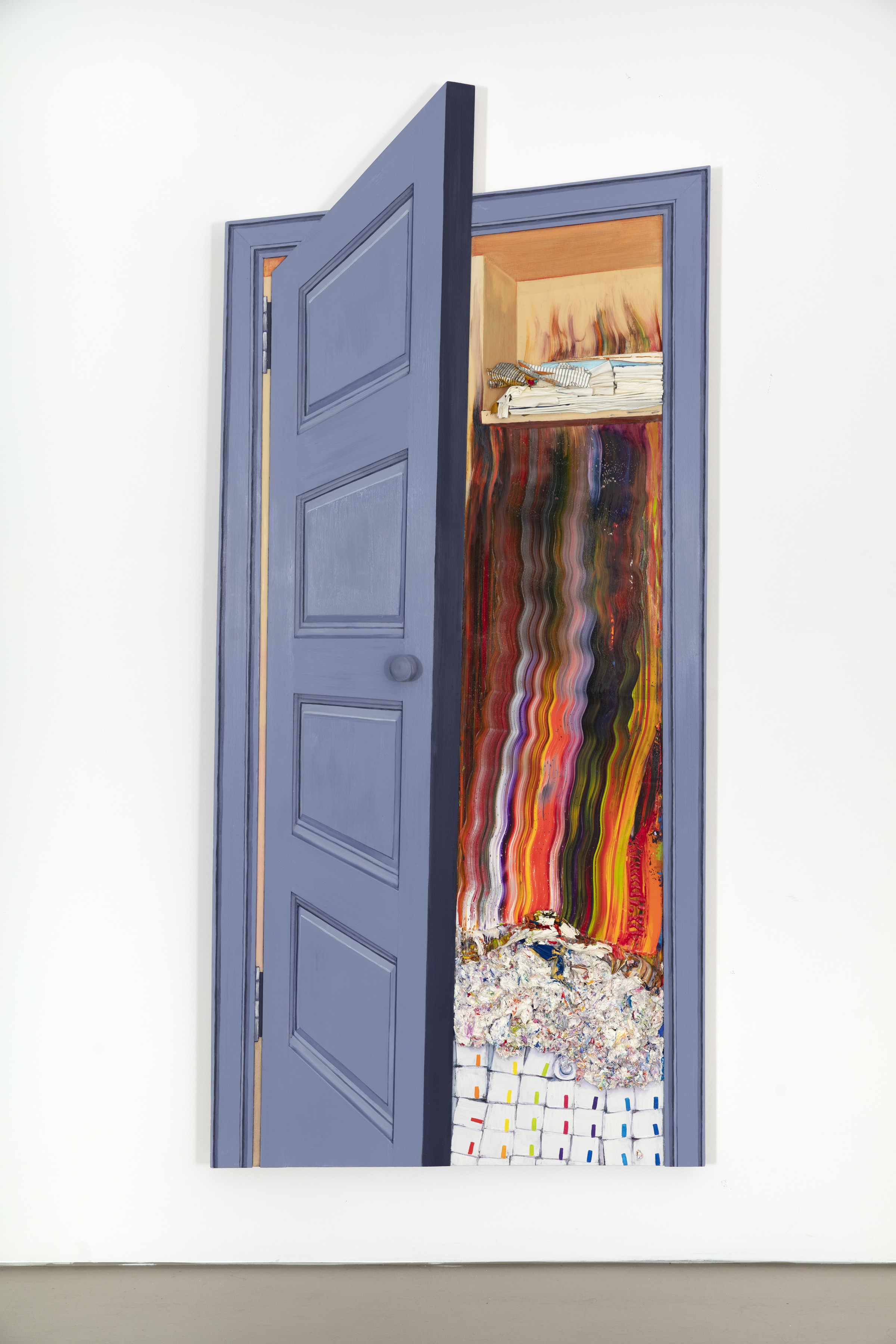
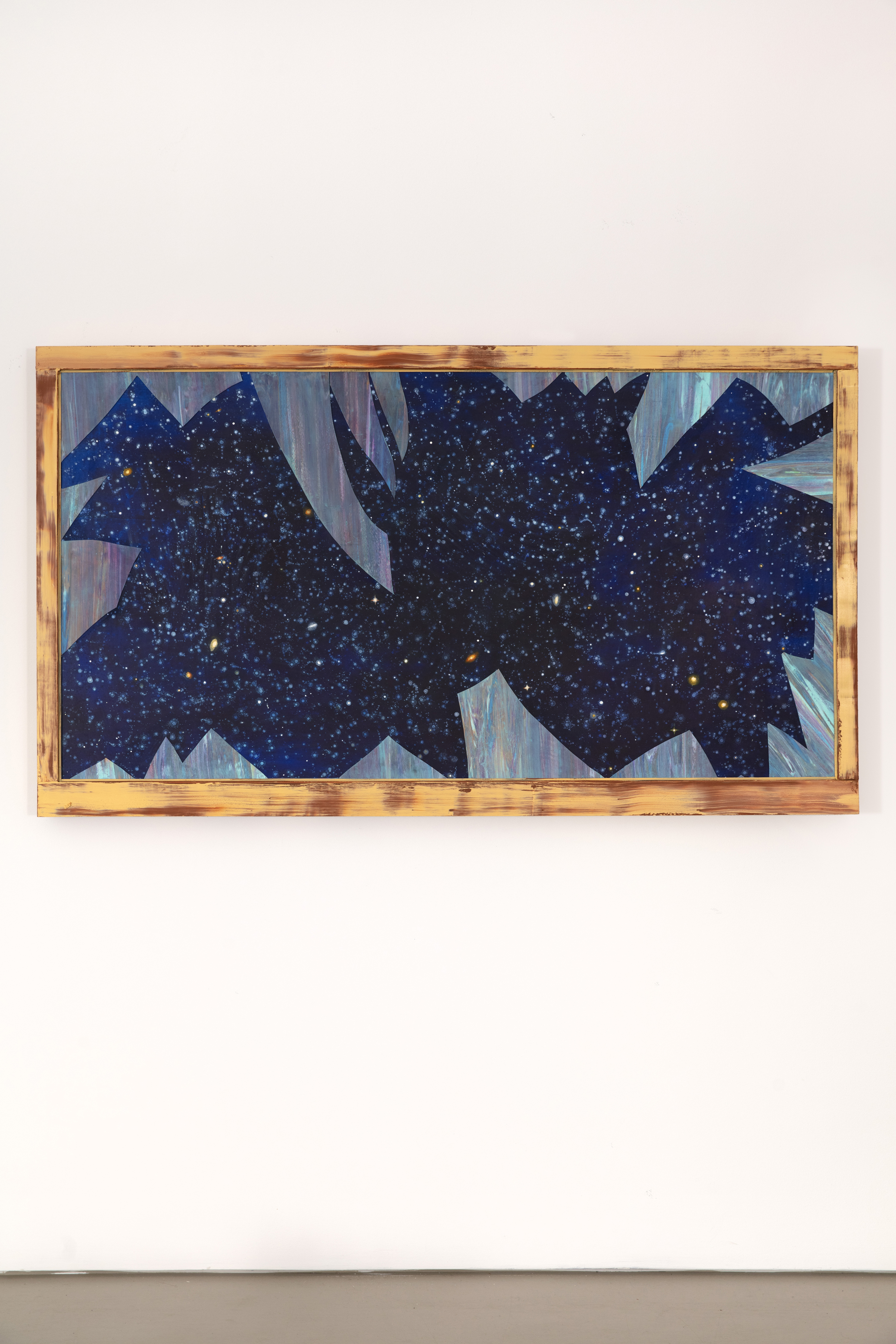
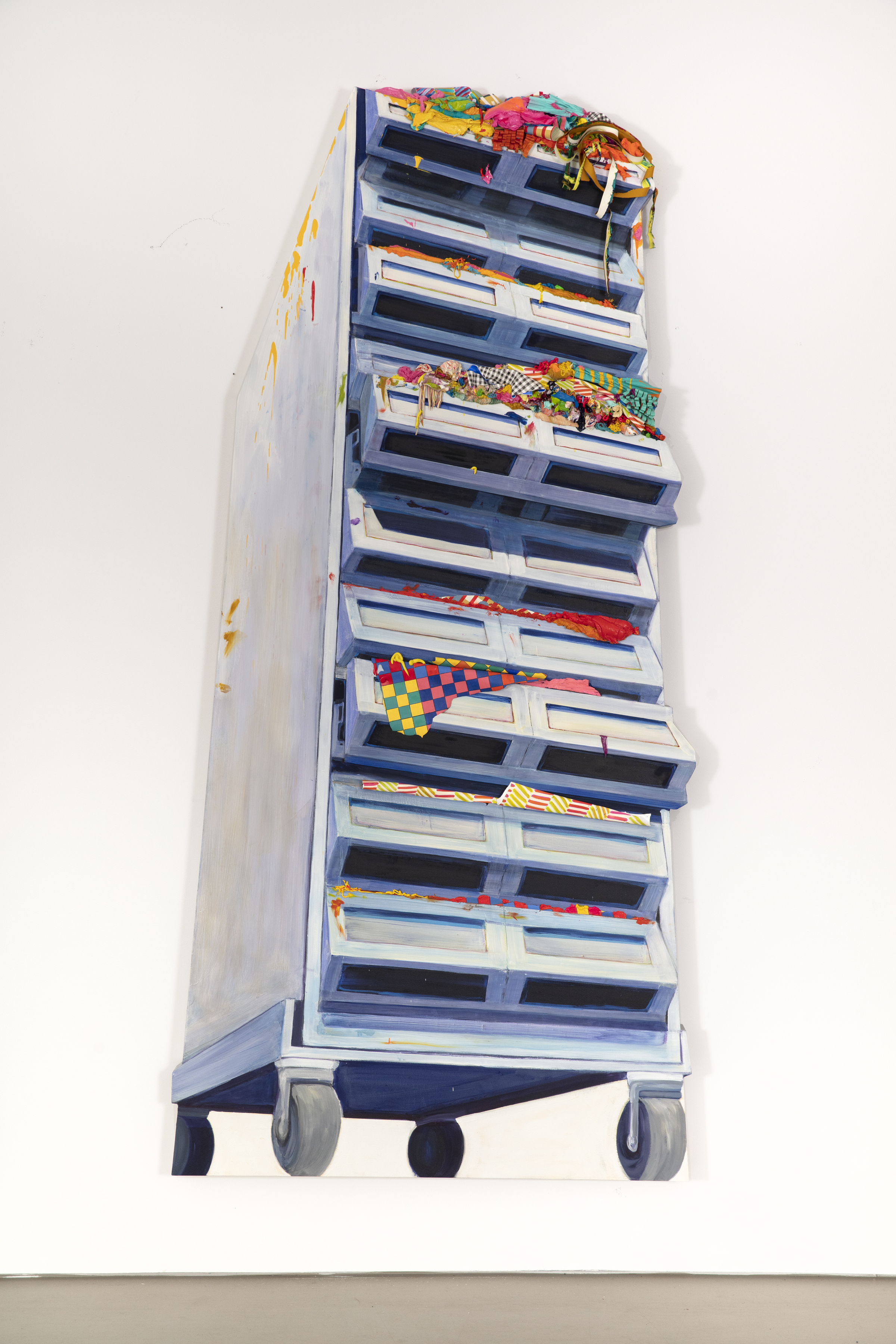
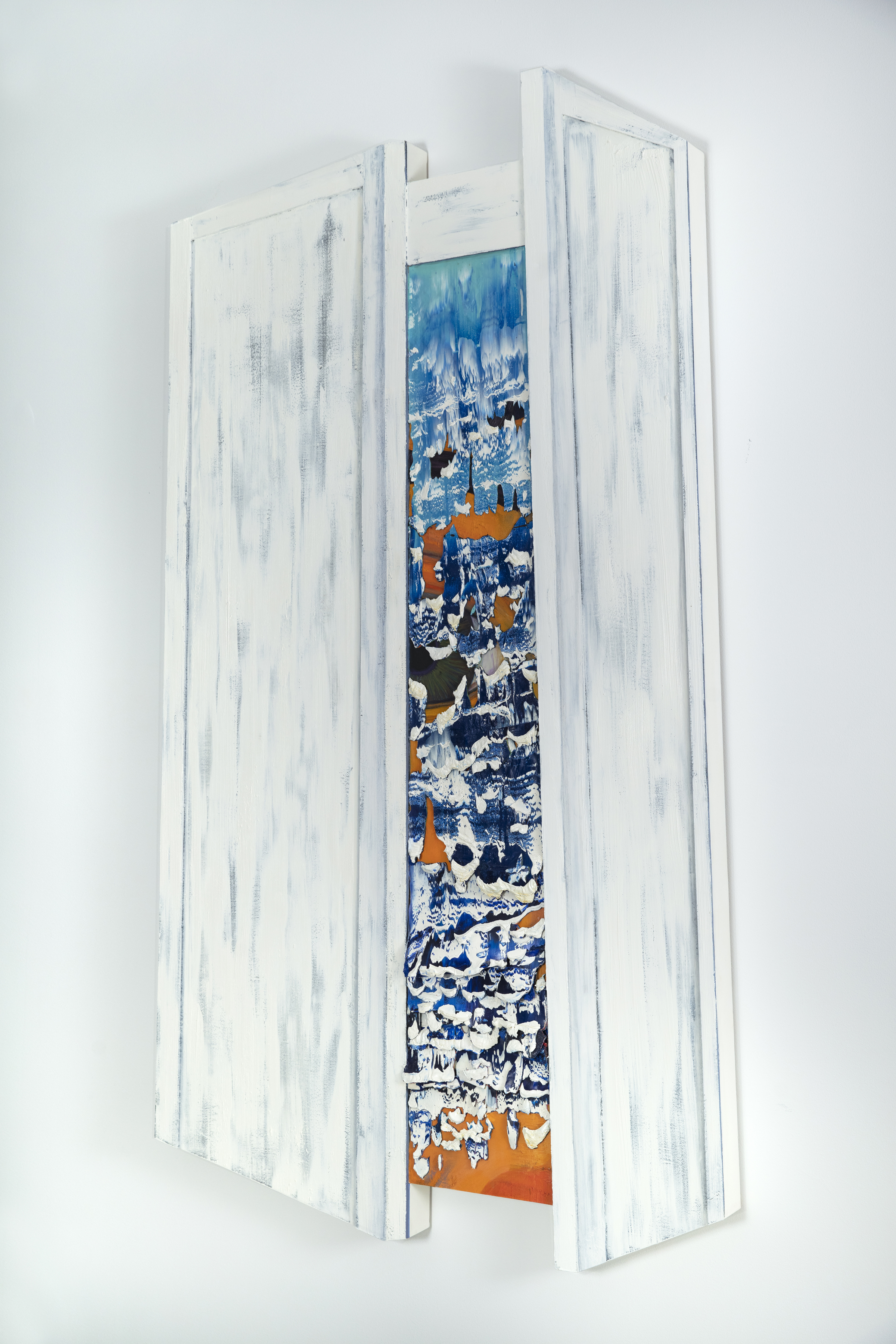
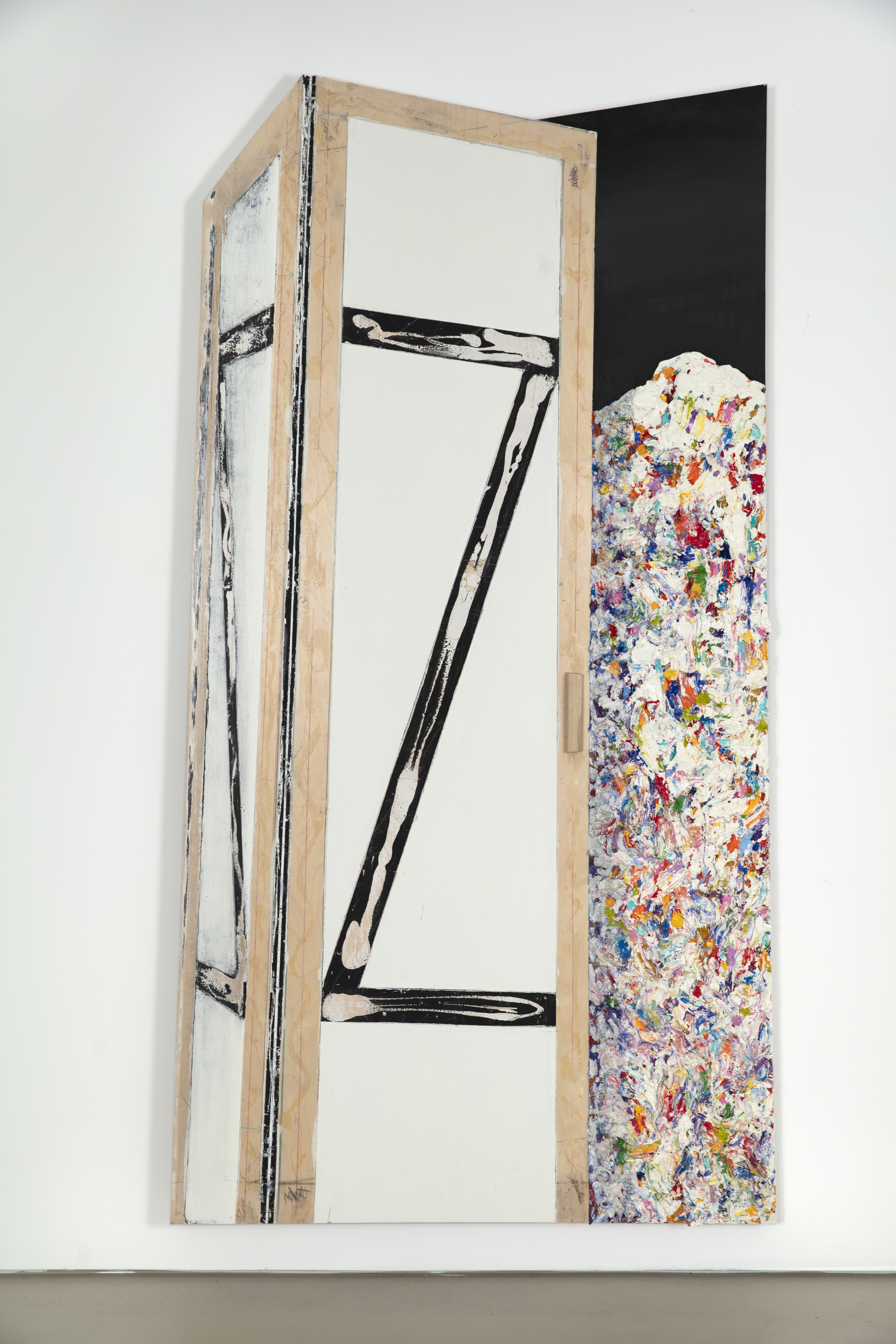
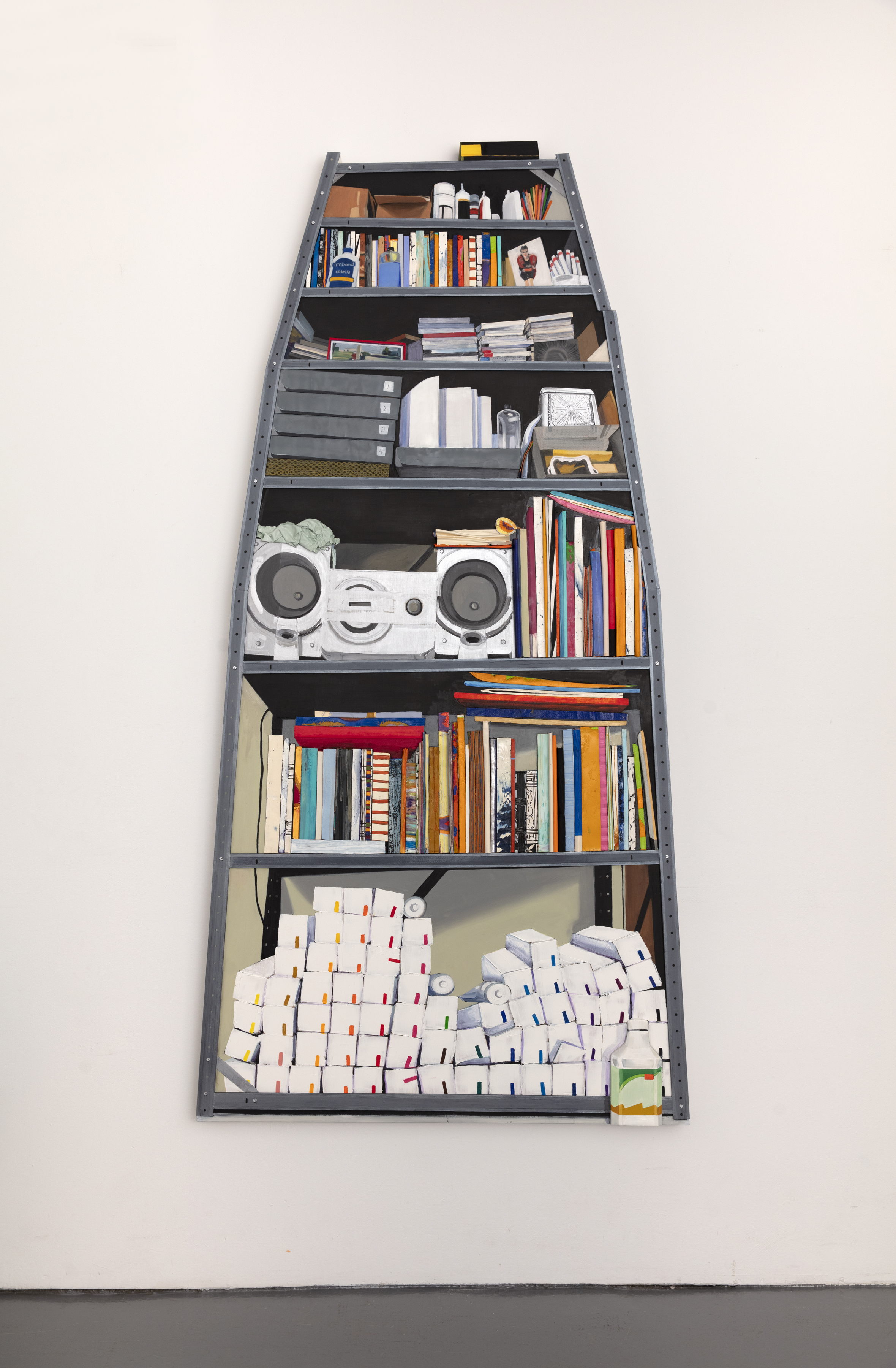
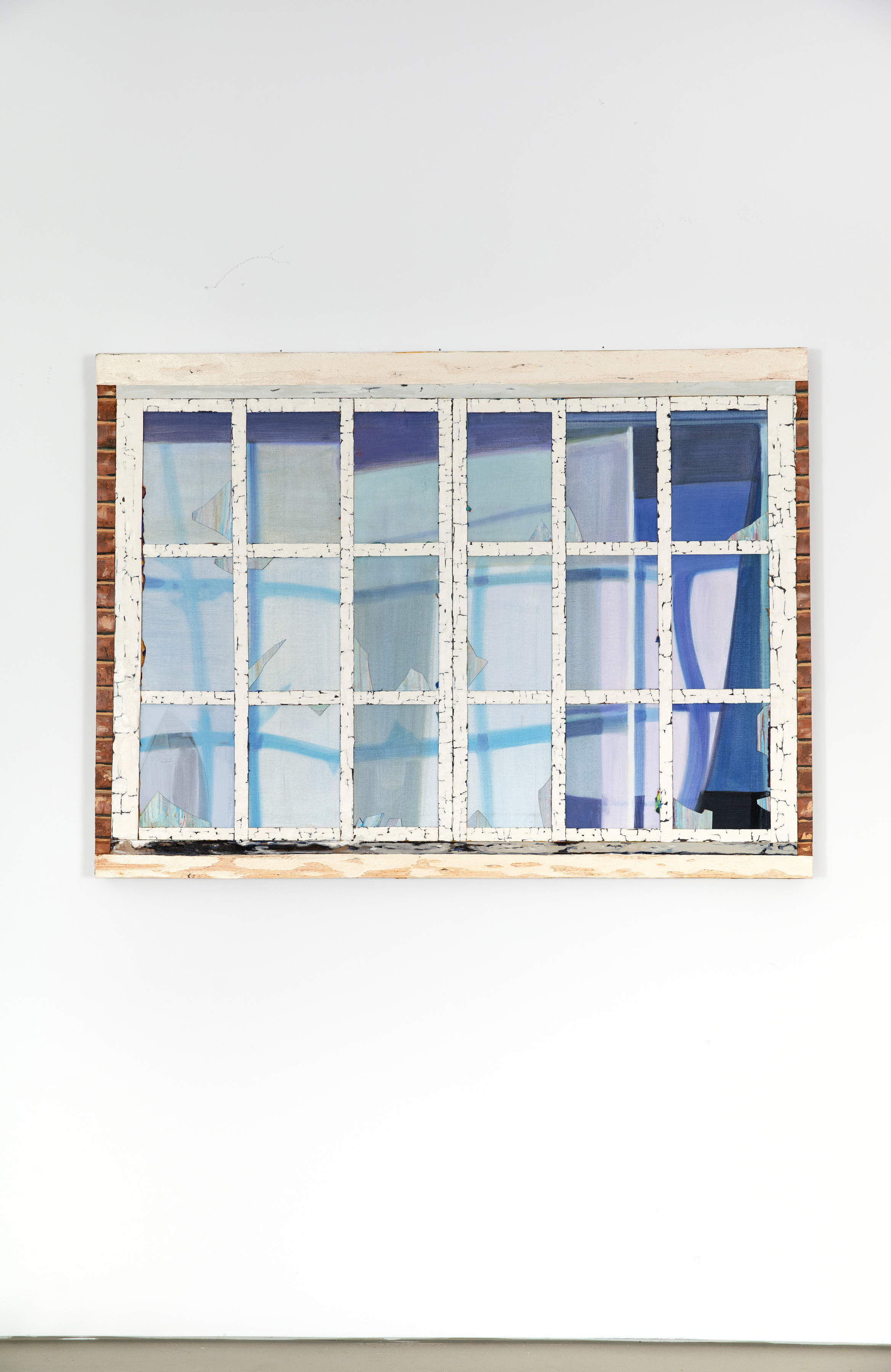
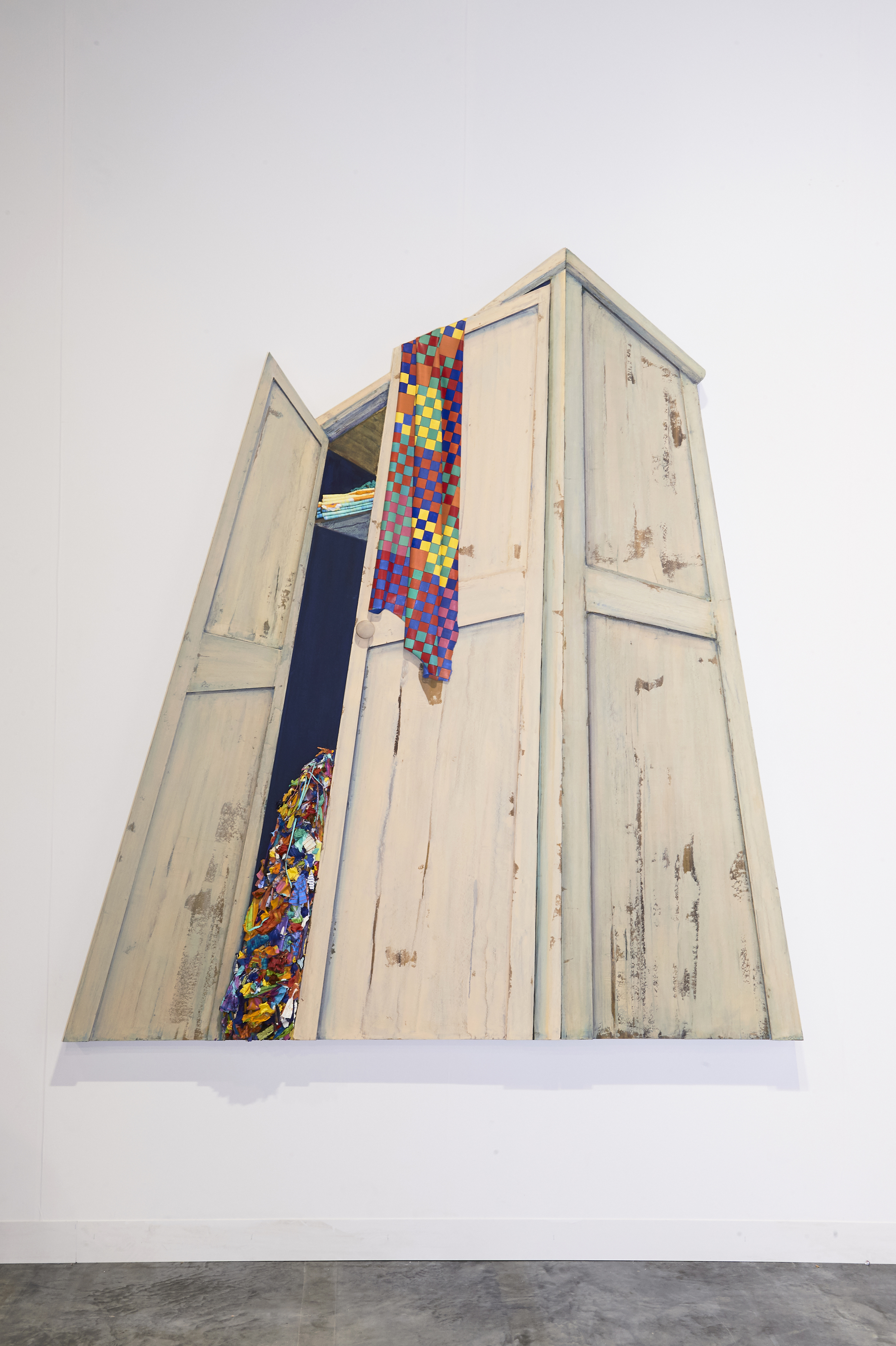
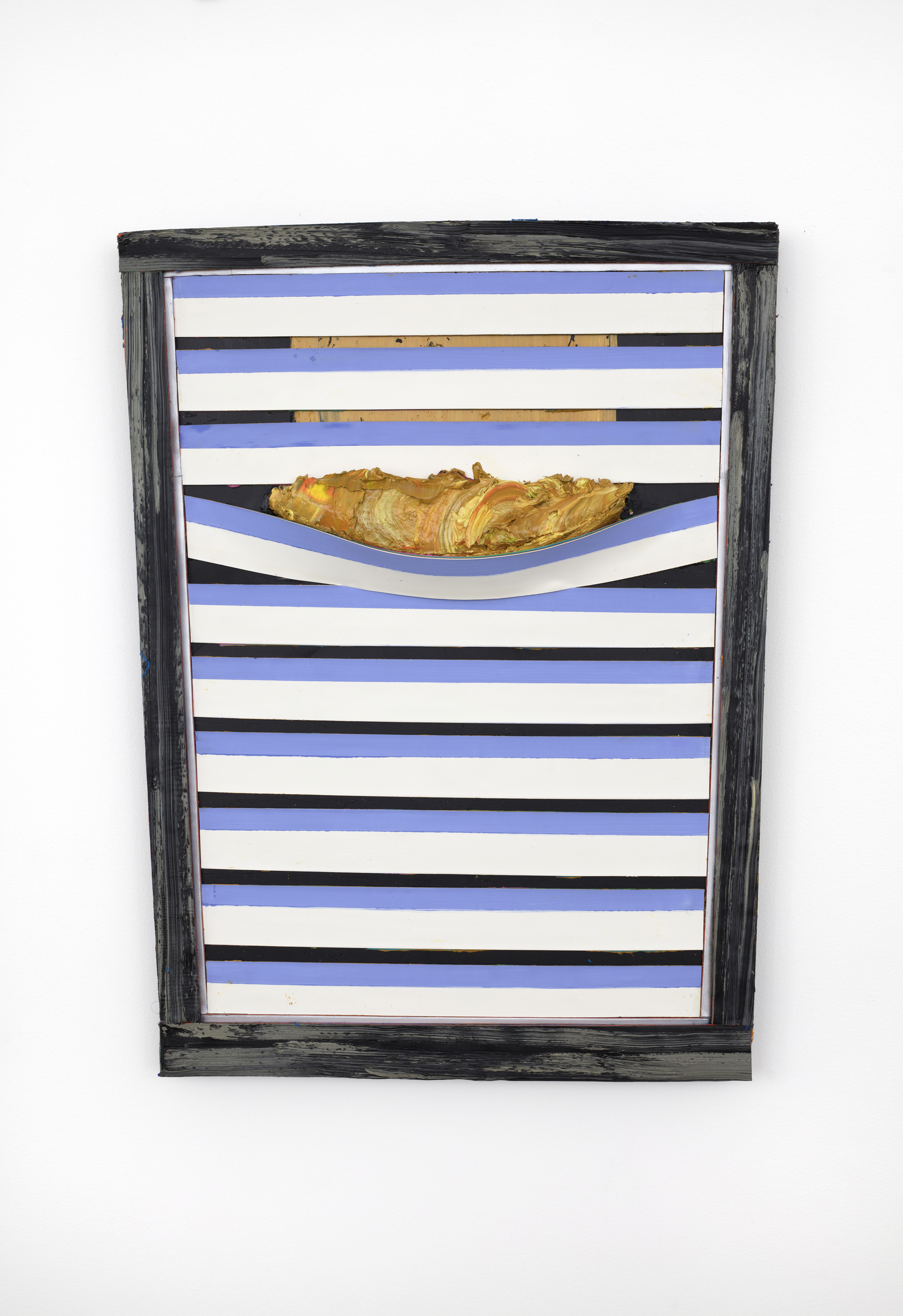
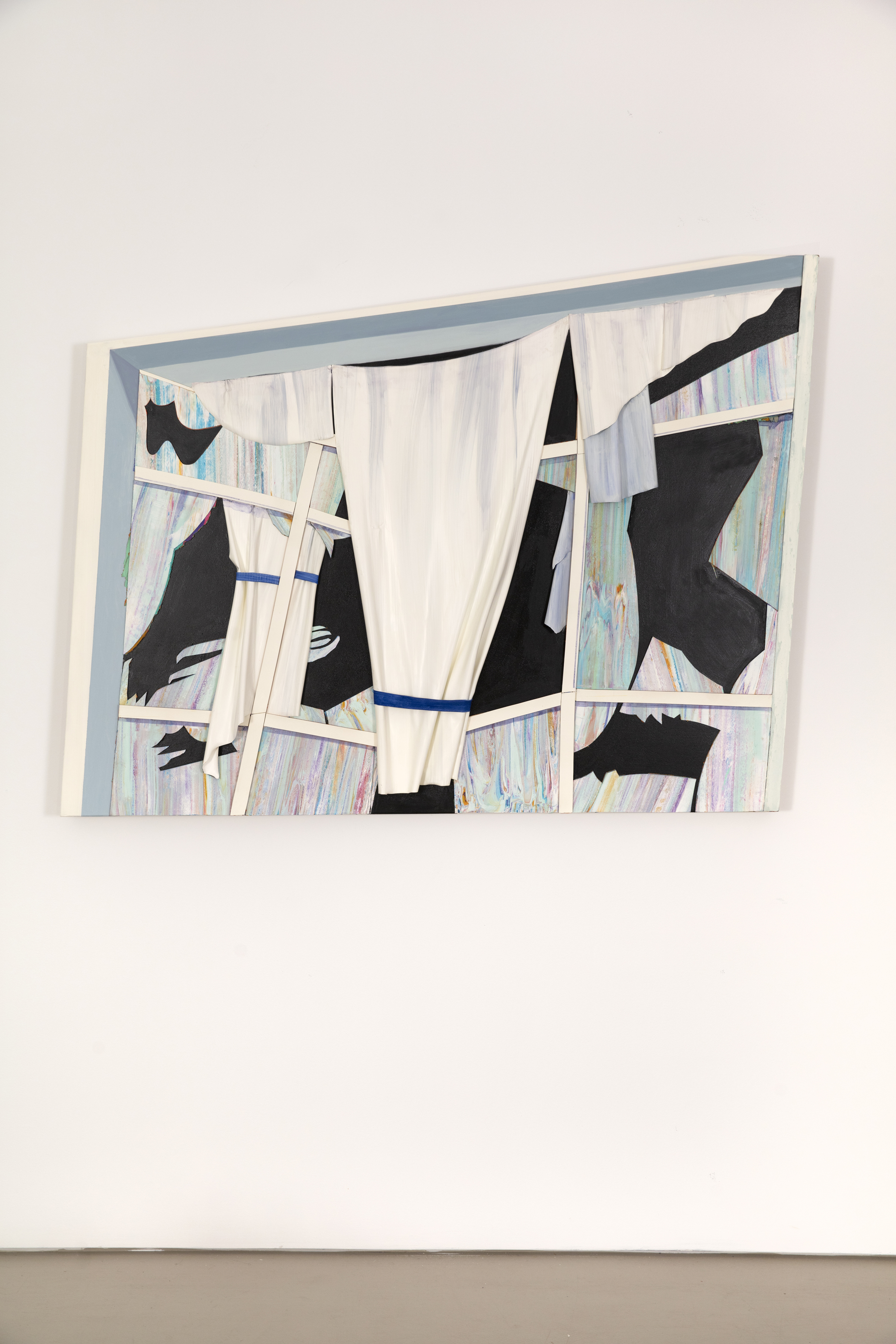















What's Inside
In the last two years I’ve experienced a slight but perceptible drift from easy play with pictorial representation in Free Experience, my last exhibition, to full-on verisimilitude in this new group of paintings I’ve called What’s Inside.
It comprises two distinct but related bodies of work: containers in the form of cabinets, closets, drawers and bookshelves; and windows. The objects determine the shapes of the paintings at the outset. Door frames, armoires, closets with bifold doors, shelving units, window frames, and broken glass are partly painted in trompe l’oeil, and partly built up with the dimensional use of paint. It’s not readily apparent what is illusion and what is in fact real, and their large scale invites further scrutiny. One could envision stepping across the threshold of the picture plane into their imagined interiors.
My path to this place, like all true paths, has not been strictly linear. As I look behind me however, I see a continual preoccupation with the concept of the threshold. This series of paintings takes stock of the many iterations of that focus and returns full circle to the world of images, where abstraction still firmly embraces ambiguity.
It would be easy for me to build a narrative around this work that addresses my anxiety about the environment and the current state of political affairs. Climate change, the immigration crisis, fake news, and hateful rhetoric, all point to the ongoing breakdown of our cultural and moral fabric. A painting of a broken window, or a window from which some sort of toxic ooze is seeping through the blinds, feels like a fitting metaphor for my foreboding unease. A painting of a boarded-up window is an image of a threshold you could not cross and a future you cannot picture.
The large paintings of cabinets, closets, drawers and shelves, while perhaps less daunting, are seen from the point of view of a small child looking into a forbidden space or up to an unreachable ledge. They assume a kind of German Expressionist perspective of an environment that’s not quite right. And in many of them, things are indeed out of whack. Containers are permeable and our best attempts at safeguarding their contents can go awry. Water can leak in, shelves can dislodge, contents can spill out or catch fire. Closets may contain dangerous or sensitive secrets and strange things can happen inside a closet. But most everyone wants to know what’s inside of one and it can just as easily be a magical zone of refuge for a child seeking comfort from the outside as its doors open on to a whole other world of fantasy.
These narratives and metaphors are there to read. Underlying the paintings there is also a truth that holds for any artist whose work depends upon process more than planning. For me, the impetus of change comes usually from something unanticipated – an encounter with another work of art, a technical “mistake” in the studio, a word or passage in a book, or a deeply personal event – rather than from a deliberate blueprint for a specific outcome. This new work considers all of those moments and looks both outward to the world and inward to my own life.